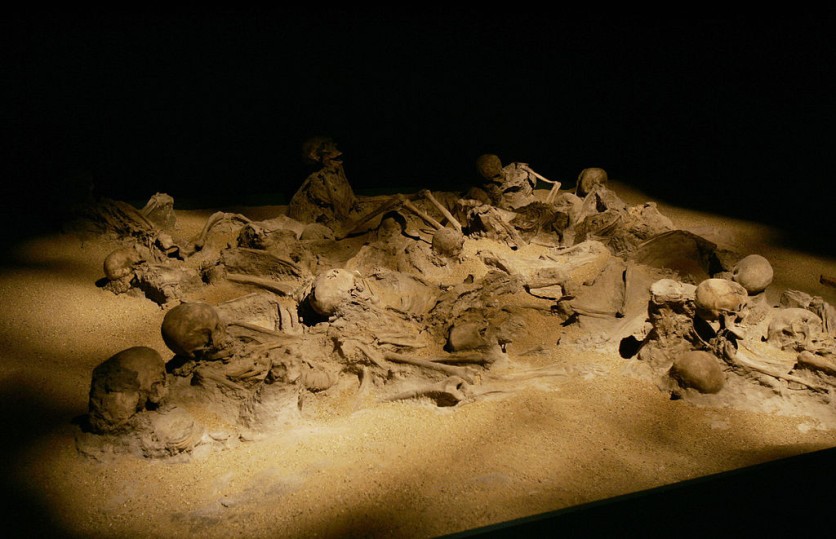New details have come to light regarding the effects of the iconic plaster used to cast the victims' bodies in the ancient Roman city of Pompeii that was wiped out when Mount Vesuvius erupted.
Recent research revealed that the plaster used to cast the victims may have led to contamination of the remains, complicating efforts to ascertain the actual cause of death.

Ancient Inhabitants of Pompeii Buried in Volcanic Ash
According to ScienceAlert, Pompeii, an ancient town near Naples, Italy, was buried in volcanic ash during the eruption of Mount Vesuvius in 79 AD.
The casts, made by pouring plaster into voids left by decomposed bodies under calcified volcanic ash, are poignant relics capturing the final moments of those who perished in the catastrophe.
The study, led by Llorenc Alapont of the University of Valencia in Spain, has suggested that the use of plaster as a consolidant has affected the elemental profiles of some of the analyzed cast bones.
Over a hundred casts were created in the 1870s, with the few remaining skeletal fragments embedded within them. Researchers have faced challenges in conducting biochemical analysis due to the impact of plaster on the remains.
Non-invasive X-ray fluorescence scanning was employed for the first time to analyze the chemical composition of the remains. The researchers identified altered concentrations of phosphorus and calcium in some bones, indicating contamination.
That allowed them to distinguish bones least affected by plaster for further analysis. The findings are aligned with previous hypotheses based on the positions of bodies and surrounding objects.
The casts reveal victims who attempted to shield themselves from the volcanic ash and gas, with fine ash molding around them and even preserving their expressions.
'Oven Effect'
Analysis suggested that those who died near Porta Nola were likely killed by asphyxiation caused by gas and ash released during the volcanic eruption.
The researchers speculated that the gas and ash would have made breathing difficult even at low concentrations. This unfortunate fate preceded a devastating surge of incinerating gas and ash.
The extreme temperatures led to the "oven effect," causing bones to be left behind in cavities as the flesh was incinerated. These voids were subsequently filled with plaster, creating the haunting casts seen today.
The researchers acknowledged that their proposed hypothesis for the cause of death is context-specific and may not apply to all victims. They emphasized that the catastrophic eruption likely resulted in various causes of death.
The team recommended that future analyses of casts from different parts of Pompeii consider the potential interference of plaster. While the study has cast a new light on the casts themselves, it has also provided insights into the tragic final moments of the ancient inhabitants of Pompeii.
While complicating biochemical analysis, the plaster has played a role in preserving the victims' positions, expressions, and even their garments, offering a poignant glimpse into the past. The findings of the team were published in the journal PLOS One.
Related Article : Archaeologists Unearth Startling Remains of 17th Century Padlocked 'Vampire Child'





